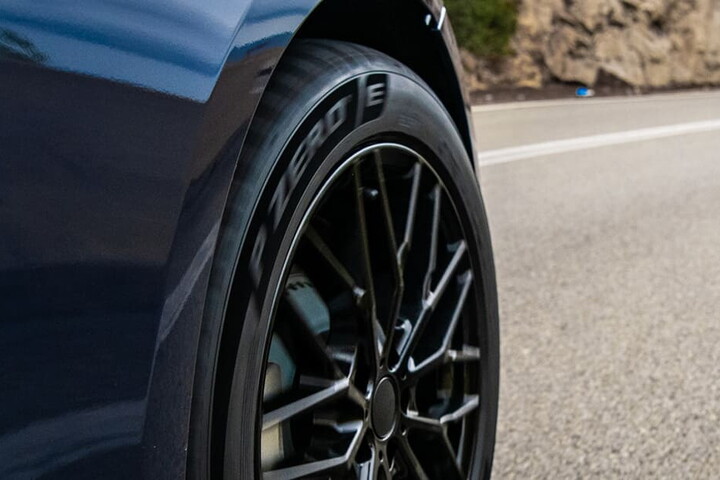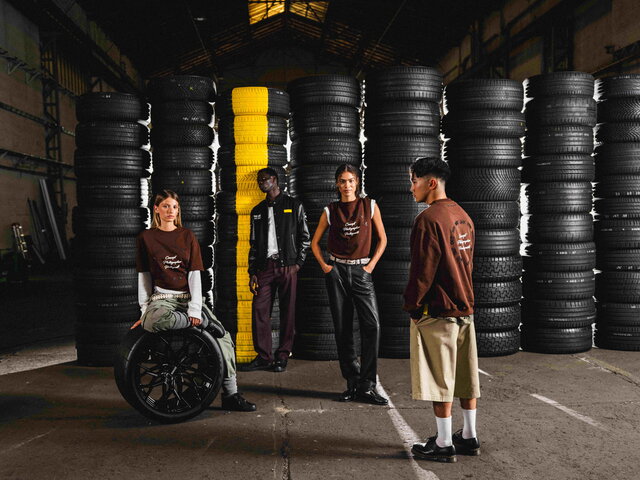Milan, a hard-working, austere and concrete city, the command centre of industry and finance. This is undoubtedly true, but Milan is also the city of fashion and creativity, the city of a thousand talents and great events. And, every spring, the Salone del Mobile lets the world know why Milan is seen as the capital of design. As the Manifesto for this fifty-seventh edition proclaims, the Salone is not simply a trade fair but also a system of connections and innovations. And into this ecosystem of excellence, bearing witness to the close relationship between the history of industry and that of creativity, naturally enters the story of Pirelli.

From the moment that the engineer Giovanni Battista Pirelli founded «Pirelli&C.» in Milan in 1872, with the aim of producing «technical articles» in rubber, Milan's transformation took place also through the evolution of the company with the distinctive letter P. From the industrial revolution to its more recent urban transformations Pirelli has accompanied and driven the city's development, inextricably linked to the technological progress of the Lombard capital and the changes that have unfolded in its cultural and economic fabric.
Movement, light, space, communication, image and sound are the elements uniting all of the outstanding exhibits at Design Week, pillars of genius applied to reality. Elements that through the years Pirelli has known how to develop with a cutting-edge spirit, thanks to its “polytechnical culture”: a sophisticated web of relationships, creativity and social responsibility. For example it was precisely the power of communication that enabled the company to assert its distinctive trademark, with advertising campaigns conceived by artists and designers that have become a part of both everyday custom and the history of art, including Fulvio Bianconi's illustrations of the Milanese factory and the advertising campaigns of the architect Alessandro Mendini.
And at the Salone this communication also comes across through its exhibition stands, fully-fledged showcases in which the artist adds his own interpretation to the image of the company and its products. An outstanding example in this context is the “maze” created by Bruno Munari in 1954 for the 32nd Fiera di Milano, promoting and extolling the Pirelli Coria sole: a graphic journey, “a walk with progress” that was later included in the MoMA Collection in New York. Or the poster-window designed in 1959 by the illustrator Lora Lamm to advertise Pirelli's motor scooter tyres, now on show at the Milan Triennale among 180 iconic works tracing the history of Italian 20th Century design.
And precisely to mark Design Week, the Pirelli Foundation - drawing upon the company's rich historical archives - is telling the story in episodes of a century of evolution for the Pirelli stand in Milan. Here we can find, for example, a remarkable photograph from 1924 picturing the Pirelli pavilion at the Fiera Campionaria di Milano, the precursor to the Salone. This is one of the oldest images, a unique testimony of how exhibition “design” of nearly a century ago was conceived. The Pirelli Cord tyres used by Tazio Nuvolari, large rolls of elastic thread, tangled cables, rubberised fabrics and two real rubber trees: objects of all kinds alongside each other that bear witness to a capacity and manufacturing diversification that was already worthy of a large multinational. Little form and much substance Because, deep down, behind the image of pavilions that today seem like theatres, behind the meticulously designed fittings, lies the work of the factories, an extraordinary production network made up of small, even tiny craft enterprises alongside giants like Pirelli. A world of rubber that, also through the Salone, has moulded the history of Milan and Italy and has created its own unmistakable style: the Pirelli style.




